Mastering Pest Control: A Comprehensive Guide for Precision Solutions
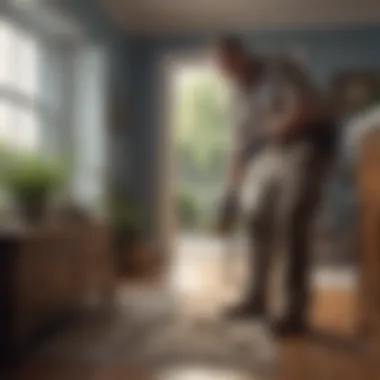

Preventive Pest Control Strategies
To begin our journey into mastering pest control, it is crucial to establish robust preventive measures. By fortifying our defenses against potential pest invasions, we lay a solid foundation for a pest-free environment. Let's delve into the key strategies that can shield our homes from unwanted intruders.
House Exterior Protection
When safeguarding our living spaces, the exterior of our homes plays a pivotal role. Simple yet effective practices such as sealing cracks in walls and foundations can act as formidable barriers against pests seeking entry. Additionally, clearing debris from outdoor spaces eliminates potential hiding spots for these unwelcome guests. By implementing proactive measures to prevent pests from entering our homes, we bolster our defenses significantly.
Yard Maintenance
The space surrounding our homes also requires meticulous care to ward off pest infestations. Engaging in essential yard care routines, such as regular mowing and pruning, can disrupt the habitats of common pests. Furthermore, employing methods tailored to keep our yards pest-free, like removing standing water that attracts mosquitoes, serves as a potent deterrent against unwelcome critters.
Indoor Cleanliness
Maintaining a clean indoor environment is paramount in pest prevention. Expert cleaning techniques can eliminate food sources and hiding spots that attract pests. By diligently upholding a pest-resistant indoor space through proper sanitation and clutter reduction, we significantly reduce the likelihood of infestations taking root.
Garbage Disposal
Efficient waste disposal practices play a crucial role in deterring pests. Properly securing garbage bins and promptly disposing of food waste deprive pests of sustenance, encouraging them to seek alternative locations. Emphasizing the importance of sound garbage disposal not only promotes cleanliness but also acts as a formidable defense mechanism against potential intruders.
Other Pest Prevention Strategies
In our quest for pest-free homes, innovation emerges as a valuable ally. Exploring alternative methods to safeguard our living spaces, such as installing motion-activated lighting or utilizing plant-based repellents, can offer additional layers of protection. By embracing diverse strategies beyond the conventional, we bolster our defenses and create an inhospitable environment for pests.
Understanding Pests
Pests are a ubiquitous nuisance in households, posing numerous threats to health and property. Understanding the characteristics and behaviors of common pests is crucial in effectively eradicating infestations. In this article, we delve into the significance of comprehending pests to equip readers with the knowledge required to combat these intruders successfully. By identifying pest types and their specific traits, individuals can implement targeted pest control measures, safeguarding their homes and families against potential dangers.
Types of Common Pests
Rodents
Rodents, including mice and rats, are notorious for their destructive habits and capability to spread diseases. Their rapid reproduction rates and versatile eating habits make them formidable foes in pest control. Due to their agility and knack for finding hidden entry points, rodents can infiltrate homes easily, posing a severe threat to hygiene and structural integrity. Implementing rodent control measures is imperative in mitigating health risks and preventing property damage.
Insects
Insects encompass a wide range of species, ranging from harmless to harmful invaders. Their ability to multiply rapidly and adapt to diverse environments makes them challenging to eradicate. In this context, understanding the unique characteristics of various insects is vital for devising effective pest control strategies. By recognizing the behaviors and habitats of common insects like ants, cockroaches, and bedbugs, individuals can tailor their pest management approaches for optimal results.
Arachnids
Arachnids, such as spiders and scorpions, present a distinct set of challenges in pest control due to their venomous nature and elusive behavior. While some arachnids serve as beneficial predators, others pose risks to human health and well-being. Awareness of arachnid species prevalent in a specific region aids in implementing targeted pest control solutions. By understanding the habits and habitats of arachnids, homeowners can effectively mitigate risks and create a safer living environment.
Factors Contributing to Pest Infestations
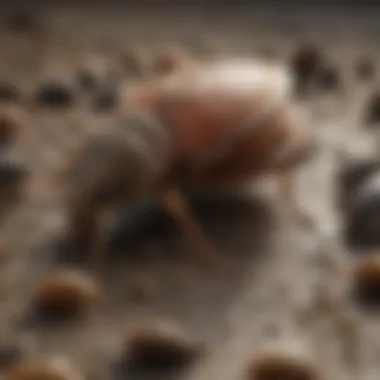
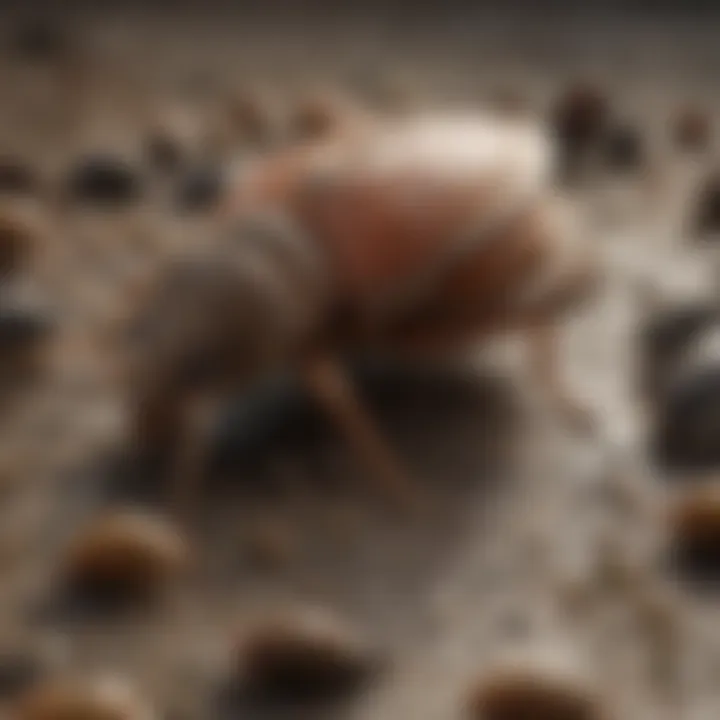
Food Sources
Food sources, including crumbs, spills, and improperly stored food items, serve as primary attractants for pests. The availability of easily accessible food sustains pest populations, leading to persistent infestations. Identifying and eliminating food sources is essential in disrupting the pest's source of sustenance, thereby reducing their presence within the living space. By practicing proper food storage and cleaning routines, individuals can significantly reduce the risk of pest invasions.
Water Supply
Water sources, such as leaking pipes, stagnant water, and condensation, create favorable conditions for pests to thrive. Adequate moisture content provides essential hydration for pests, facilitating their survival and reproduction. Addressing water supply issues through timely repairs and maintenance minimizes pest attraction and proliferation. By fixing leaks and promoting proper drainage, homeowners can deter pests seeking moisture and safeguard their homes from infestations.
Shelter
Shelter plays a pivotal role in pest infestations, offering refuge and breeding spaces for unwanted intruders. Gaps in building structures, cluttered spaces, and secluded areas serve as ideal habitats for pests to establish colonies. By sealing entry points, decluttering living spaces, and conducting regular inspections, individuals can create an inhospitable environment for pests. Preventing pest access to shelter locations reduces the likelihood of infestations, promoting a pest-free living environment for residents.
Identifying Pest Infestations
In the comprehensive guide to mastering pest control, the section on Identifying Pest Infestations plays a pivotal role. By being able to accurately identify the presence of pests in and around your living spaces, individuals can take proactive measures to address pest infestations effectively. This section sheds light on crucial indicators that hint at potential pest issues, empowering readers to tackle the problem at its root.
Signs of Pest Presence
Droppings
Droppings left behind by pests serve as a significant sign of their presence. These excrement remnants provide valuable insight into the type of pests infiltrating your surroundings, aiding in the identification process. Despite their unpleasant nature, droppings offer a clear indication that pests are actively inhabiting the area, prompting immediate action to eliminate them. While repulsive, the presence of droppings is a reliable marker for pest activity, making it a staple observation in pest control efforts.
Chewed Items
The presence of chewed items further solidifies the evidence of a pest infestation. Whether it's discarded food packaging or gnawed wooden structures, signs of physical damage indicate that pests are actively feeding and nesting in the vicinity. Recognizing the distinct marking left behind by their chewing habits allows individuals to pinpoint the specific pest species causing the destruction, facilitating targeted eradication methods. While disruptive, the occurrence of chewed items serves as a tangible reminder of the urgent need to address pest issues promptly.
Nests
Pests often create nests as safe havens to breed and multiply, emphasizing the severity of the infestation. Discovering these nests hidden within walls, attics, or concealed corners unveils the scale of the pest population and the extent of their residency. By locating and dismantling these nests, individuals disrupt the pests' reproductive cycle and reduce the likelihood of future infestations. While challenging to spot, identifying pest nests is a critical step in mitigating pest problems effectively, ensuring a more sustainable pest control outcome.
Common Pest Entry Points
Cracks and Crevices
Cracks and crevices in buildings serve as prominent entry points for pests seeking shelter and sustenance. These small openings offer pests easy access to interior spaces, allowing them to establish colonies and thrive unnoticed. Identifying and sealing these entry points is essential in preventing pest infiltration and minimizing the risk of infestations. While pervasive, addressing cracks and crevices requires meticulous attention to detail to fortify the structural integrity of the premises against pest incursions.
Openings around Pipes
Openings around pipes present another common entry point for pests, enabling them to migrate between outdoor and indoor environments seamlessly. The gaps surrounding pipes provide a pathway for pests to navigate through plumbing systems, increasing the likelihood of infestations inside the property. Sealing these openings not only deters pests from intruding but also enhances the overall security and hygiene of the living space. While inconspicuous, addressing openings around pipes is a crucial step in safeguarding homes against pest invasions.
Windows and Doors
Windows and doors, although necessary for ventilation and access, can also serve as vulnerable points for pest ingress if improperly maintained. Gaps in window screens or door frames create opportunities for pests to sneak into the premises undetected, posing a risk of infestation. Regularly inspecting and securing these entryways is imperative in fortifying the household defenses against unwelcome intruders. While routine, addressing vulnerabilities in windows and doors is a fundamental aspect of proactive pest management, ensuring a pest-free living environment for occupants.
Implementing Precise Pest Solutions
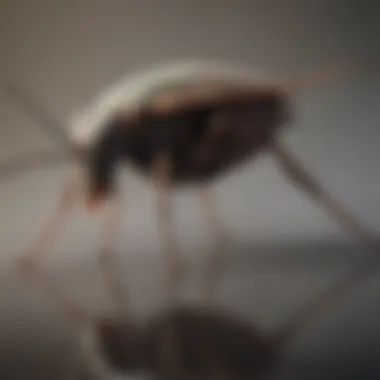
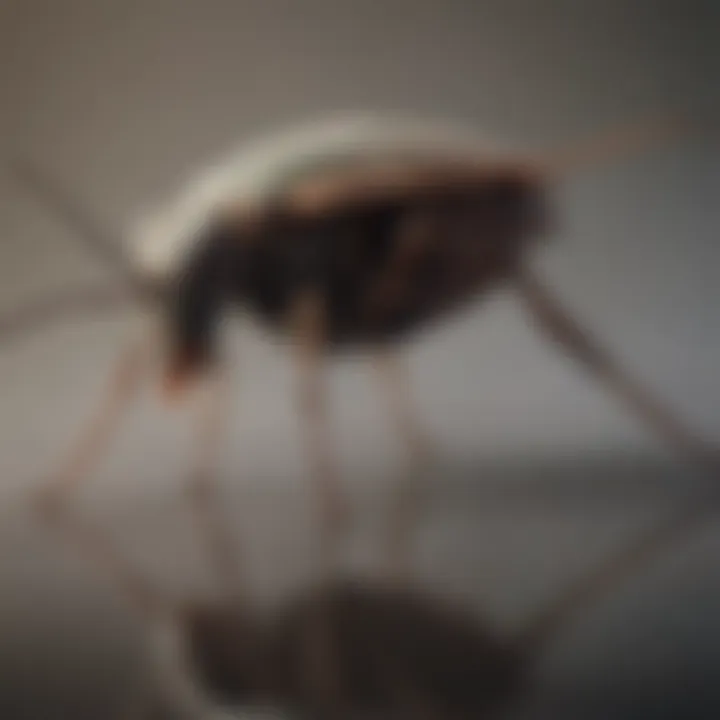
In this section of our comprehensive guide to mastering pest control, we delve into the crucial aspect of implementing precise pest solutions. Addressing pest infestations effectively requires a multi-faceted approach that combines various control methods for optimal results. By focusing on tailored solutions, individuals can tackle pest issues with precision and efficiency. Understanding the specific pest species present, their behaviors, and the environmental factors at play is fundamental in devising an effective control strategy
Natural Pest Control Methods
Biological Controls
When it comes to combating pests naturally, biological controls stand out as a cornerstone of effective pest management strategies. Utilizing natural predators or pathogens to control pest populations, biological controls offer a sustainable and eco-friendly alternative to chemical treatments. The key characteristic of biological controls lies in their ability to target specific pest species while minimizing harm to non-target organisms, making them a popular choice for environmentally conscious individuals seeking precise pest solutions. One unique feature of biological controls is their capacity to establish long-term pest suppression without disrupting the ecosystem's balance. This approach's advantages include reduced chemical usage, lower environmental impact, and enhanced biological diversity, creating a harmonious pest management solution
Botanical Extracts
In the realm of natural pest control, botanical extracts play a significant role in providing effective and safer alternatives to synthetic pesticides. Derived from plants with natural pesticide properties, botanical extracts offer a powerful yet environmentally friendly method for managing pest infestations. The key characteristic of botanical extracts is their biopesticidal properties, which enable them to deter, disrupt, or kill pests while posing minimal risks to humans, pets, and beneficial organisms. Choosing botanical extracts aligns with the goal of this article, emphasizing precision and safety in pest control measures. One unique feature of botanical extracts is their ability to target specific pests while leaving beneficial insects unharmed, promoting a balanced ecosystem within the affected area. The advantages of utilizing botanical extracts include reduced chemical exposure, improved air and soil quality, and sustainable pest management practices
Traps and Barriers
When implementing natural pest control methods, traps and barriers play a vital role in capturing or deterring pests without the use of chemicals. Traps and barriers offer a targeted approach to pest control, allowing individuals to monitor and control pest populations effectively. The key characteristic of traps and barriers lies in their ability to physically intercept pests, limiting their entry or movement within a property. This method is a popular choice for those seeking non-toxic and selective pest management solutions. A unique feature of traps and barriers is their versatility in targeting different pest species while minimizing environmental impact. Advantages of using traps and barriers include reduced reliance on chemical treatments, enhanced pest monitoring capabilities, and a lower risk of pesticide exposure for residents and pets
Chemical Pest Control Strategies
Insecticides
In the realm of chemical pest control, insecticides play a pivotal role in managing pest infestations efficiently. Insecticides are formulated to target and eliminate insect pests quickly, making them an effective choice for controlling outbreaks. The key characteristic of insecticides is their direct and rapid action against pests, providing immediate relief from infestation pressures. This makes them a popular choice for rapid intervention when faced with severe pest problems. One unique feature of insecticides is their versatility in targeting a wide range of insect pests, offering a broad-spectrum solution to pest issues. Advantages of using insecticides include rapid pest knockdown, convenience in application, and proven efficacy in controlling various insect species
Rodenticides
When dealing with rodent infestations, rodenticides play a crucial role in eliminating these highly destructive pests from properties. Rodenticides are specifically designed to target rodents, offering an efficient and targeted solution to rodent problems. The key characteristic of rodenticides is their lethal effect on rodents, providing a swift and effective means of pest control. This makes them a popular choice for households and businesses plagued by rodent issues. One unique feature of rodenticides is their ability to address rodent infestations in hard-to-reach areas, ensuring comprehensive pest eradication. Advantages of using rodenticides include targeted rodent control, quick results in rodent elimination, and reduced potential for property damage caused by rodents
Fumigation
In cases where severe pest infestations warrant immediate and comprehensive control measures, fumigation emerges as a highly effective pest control strategy. Fumigation involves the use of gaseous pesticides to eliminate pests within enclosed spaces, reaching areas that are inaccessible by other methods. The key characteristic of fumigation is its ability to penetrate hidden spaces and crevices, ensuring thorough pest extermination throughout an infested area. This method is a popular choice for dealing with extensive infestations that require rapid and complete eradication. One unique feature of fumigation is its ability to treat large areas simultaneously, making it ideal for addressing widespread or stubborn pest problems. Advantages of fumigation include its effectiveness in targeting hard-to-reach pests, its comprehensive pest control coverage, and its ability to provide immediate results in severe infestation scenarios
Preventative Measures for Long-Term Pest Management
In the realm of pest control, prioritizing preventative measures for long-term management is crucial. These crucial measures serve as a proactive approach to safeguarding your property against potential infestations in the future. By addressing vulnerabilities and areas where pests could potentially gain entry, individuals can significantly reduce the likelihood of pest problems persisting. Additionally, implementing preventative measures can save time, money, and effort that would otherwise be spent on addressing full-blown infestations. Through a combination of strategies like sealing entry points and maintaining cleanliness, long-term pest management becomes a sustainable and effective practice.
Sealing Entry Points
Repairing Cracks:
Within the overarching goal of long-term pest management, repairing cracks plays a pivotal role in fortifying the structural integrity of your property. This task involves identifying and sealing any visible cracks or gaps in walls, floors, or foundations that serve as potential entry points for pests. Repairing cracks not only inhibits pest intrusion but also enhances the energy efficiency of the building. The key characteristic of repairing cracks lies in its ability to address both aesthetic and functional aspects of a structure. While this method is popular for its immediate results, it may pose challenges in locating hidden cracks or reaching inaccessible areas.
Installing Screens:
Another vital component of sealing entry points is the installation of screens on doors, windows, and vents. Screens act as a physical barrier, preventing insects and small rodents from entering the premises while allowing for adequate ventilation. The key characteristic of installing screens is its non-invasive nature, providing a simple yet effective solution to pest prevention. However, the unique feature of screens is that they require regular maintenance to ensure their efficacy. While screens offer convenience and affordability, they may need replacement over time due to wear and tear.


Closing Gaps:
Closing gaps in areas such as around pipes, utility line entries, or electrical outlets is imperative for comprehensive pest control. Gaps provide easy access for pests to enter the building, making it essential to seal them off effectively. The key characteristic of closing gaps is its attention to detail, as even the smallest openings can serve as entry points for pests. While this method is popular for its precision, it can be time-consuming, especially when dealing with multiple gap sites. The advantage of closing gaps is that it addresses potential entryways comprehensively, reducing the chances of pest infiltration.
Maintaining Cleanliness
In the context of long-term pest management, maintaining cleanliness within and around the property is essential. This practice not only deters pests attracted to food sources and clutter but also creates an environment that is less hospitable to unwanted intruders. Proper waste disposal, regular cleaning routines, and appropriate food storage practices are key components of this preventative approach.
Proper Waste Disposal:
Proper waste disposal is a fundamental aspect of pest prevention as it removes potential food sources that may attract pests. By disposing of waste in sealed containers and promptly removing trash from the premises, individuals can minimize the chances of pest infestations. The key characteristic of proper waste disposal is its role in maintaining hygiene and thwarting pest activity. While this practice is beneficial for overall cleanliness, improper waste disposal can lead to odors and sanitation issues.
Regular Cleaning:
Regular cleaning tasks such as vacuuming, dusting, and decluttering are essential for preventing pest infestations. Dust and debris accumulation can attract pests like cockroaches and dust mites, creating an enticing environment for these unwanted inhabitants. The key characteristic of regular cleaning lies in its ability to remove potential harborage sites for pests, disrupting their ability to thrive. While regular cleaning is a simple yet effective method, it requires dedication and consistency to yield sustained results.
Food Storage Practices:
Proper food storage practices are paramount in long-term pest management, particularly for deterring pantry pests and rodents. Storing food in airtight containers, keeping countertops clean, and inspecting food items for signs of pest infestation are essential habits to adopt. The key characteristic of food storage practices is their role in eliminating food sources that may attract pests. By adhering to proper food storage guidelines, individuals can significantly reduce the risk of pest infestations. While this method is effective for controlling pests, diligence in maintaining storage practices is essential for long-term success.
Professional Pest Control Services
Professional pest control services play a vital role in implementing precise pest solutions effectively. By entrusting experts in the field, individuals can ensure a thorough assessment of their pest-related issues and the implementation of strategic control measures tailored to their specific needs. The intricate nature of pest behavior and infestation requires a specialized approach that professional pest control services can deliver with proficiency and precision.
Hiring Pest Control Experts
Assessment and Inspection
Assessing and inspecting pest infestations is a critical aspect of effective pest management. This stage involves specialists evaluating the extent of the infestation, identifying the type of pests present, and determining the underlying causes that led to the problem. Assessment and inspection serve as the foundation for developing a comprehensive pest control plan, enabling experts to create targeted strategies that address the root of the issue.
Treatment Planning
Once the assessment is complete, experts devise a customized treatment plan based on the specific pest type, infestation severity, and property layout. Treatment planning involves selecting the most efficient and eco-friendly methods to eradicate pests while ensuring minimal impact on the surrounding environment. By formulating a detailed treatment strategy, pest control professionals can execute precise actions that lead to long-term pest eradication.
Follow-Up Services
Follow-up services are a crucial component of professional pest management, guaranteeing continuous monitoring and evaluation post-treatment. This phase involves periodic visits by technicians to assess the effectiveness of the applied solutions, make necessary adjustments, and prevent future infestations. The ongoing support provided through follow-up services ensures that pest issues are resolved comprehensively, promoting sustained pest-free environments.
Benefits of Professional Pest Management
Expertise
The expertise of pest control specialists is unmatched in addressing complex pest problems effectively. With extensive knowledge and training, professionals can identify intricate pest behaviors, recognize early signs of infestations, and execute targeted control measures with precision. Their expertise minimizes the margin of error in pest management, ensuring swift and efficient resolution of pest-related issues.
Efficiency
Professional pest management services offer a level of efficiency that surpasses DIY approaches. By leveraging advanced tools, technologies, and industry best practices, experts can streamline the pest control process, achieving rapid and reliable results. The efficient handling of pest infestations by professionals saves time, resources, and efforts for property owners, enhancing the overall efficacy of pest control solutions.
Guaranteed Results
One of the unparalleled benefits of professional pest management is the assurance of guaranteed results. Pest control experts stand behind their work, offering warranties and assurances that the implemented solutions will effectively eliminate pests and prevent their resurgence. This commitment to providing guaranteed results instills confidence in clients, reassuring them of a pest-free environment backed by the expertise and reliability of professional pest control services.



